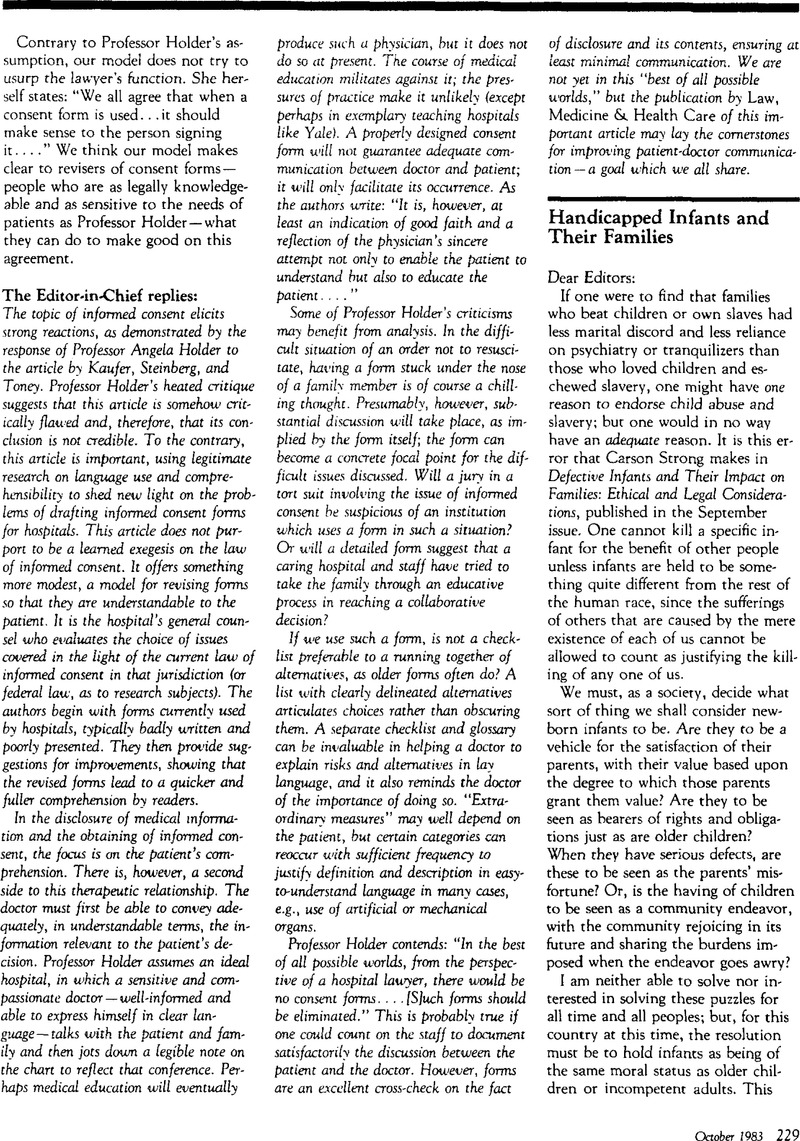No CrossRef data available.
Article contents
The Editor-in-Chief Replies
Published online by Cambridge University Press: 27 April 2021
Abstract
An abstract is not available for this content so a preview has been provided. Please use the Get access link above for information on how to access this content.

- Type
- Correspondence
- Information
- Copyright
- Copyright © American Society of Law, Medicine and Ethics 1983
References
Committee on Policy for DNR Decisions, Yale-New Haven Hospital, Report on Do Not Resuscitate Decisions, Connecticut Medicine 47(8): 477–83 (August 1983).Google Scholar
See, e.g., Emory University v. Porubiansky, 282 S.E.2d 903 (Ga. 1981); Olson v. Molzen, 558 S.W.2d 429 (Tenn. 1977).Google Scholar
Protection of Human Subjects, 45 C.F.R. §46.116 (1981). “No informed consent, whether oral or written, may include any exculpatory language through which the subject or the representative is made to waive or appear to waive any of the subject's legal rights, or releases or appears to release the investigator, the sponsor, the institution or its agents from liability for negligence.”Google Scholar
Levine, R. J., Ethics and Regulation of Clinical Research (Urban & Schwarzenberg, Baltimore, Md.) (1981) at 101.Google Scholar




